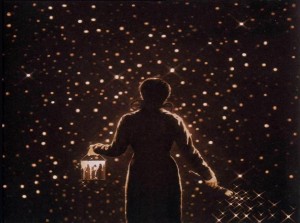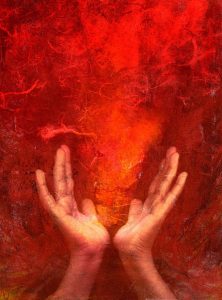 Our Moving into Meditation class continues at Yoga Bliss. Over the next few weeks we’ll draw inspiration from The Five Invitations, Frank Ostaseski’s wonderful book about living with the awareness that we’re going to die: “an ever-present consciousness of death can bring us closer to our truest selves” Frank is the cofounder of the Zen Hospice Project and Metta Institute. He has spent years being tenderly present with people during their most vulnerable moments. His book distills what he’s learned into five invitations we can answer in living a conscious life in connection with each other.
Our Moving into Meditation class continues at Yoga Bliss. Over the next few weeks we’ll draw inspiration from The Five Invitations, Frank Ostaseski’s wonderful book about living with the awareness that we’re going to die: “an ever-present consciousness of death can bring us closer to our truest selves” Frank is the cofounder of the Zen Hospice Project and Metta Institute. He has spent years being tenderly present with people during their most vulnerable moments. His book distills what he’s learned into five invitations we can answer in living a conscious life in connection with each other.
The Five Invitations:
- Don’t Wait
- Welcome Everything, Push Away Nothing
- Bring Your Whole Self to the Experience
- Find a Place of Rest in the Middle of Things
- Cultivate Don’t Know Mind
In our guided relaxation we focused on welcoming as a doorway to loving. Everyone and every part of ourselves is welcome. “No part left out, “ they say in Zen. . . .
 “We live between the act of awakening and the act of surrender. Each morning we awaken to the light and the invitation to a new day in the world of time; each night we surrender to the dark to be taken to play in the world of dreams where time is no more. At birth we were awakened and emerged to become visible in the world. At death we will surrender again to the dark to become invisible. Awakening and surrender: they frame each day and each life; between them the journey where anything can happen, the beauty and the frailty.” John O’Donohue
“We live between the act of awakening and the act of surrender. Each morning we awaken to the light and the invitation to a new day in the world of time; each night we surrender to the dark to be taken to play in the world of dreams where time is no more. At birth we were awakened and emerged to become visible in the world. At death we will surrender again to the dark to become invisible. Awakening and surrender: they frame each day and each life; between them the journey where anything can happen, the beauty and the frailty.” John O’Donohue
Here we are . . . in between . . . on our daily journey where anything can happen . . . beauty, frailty, the tenderness and resilience of love . . .
Frank Ostaseski writes: “The boundlessness of love is made evident when the veils between this world and the invisible world are thinnest. At birth and death, love melts any division. It often allows us to move beyond what we thought possible. . . . In such moments, we glimpse a love without limitation . . . This is an entirely different order of love, one that springs from the very source of our being. It recognizes and responds to the intrinsic goodness of the human heart. It is both profoundly receptive and dynamically expressive.”
Right now we can sense the subtle energies of our being that are open and receptive . . . opening to the world . . . We can sense the subtle energies that are dynamically expressive . . . feel our impulses to touch the world and those around us . . . We can discover love through the simplest acts of kindness . . . with every act drawing on the boundless nature of love . . . love teaching us how to love . . .
In our practice, we explore and relax those habitual strategies that have enclosed us, kept us isolated and sometimes very alone . . . Simply by giving ourselves more space we gradually come to see that even our armor is worthy of compassion . . . This spacious compassionate awareness – Ram Dass describes as loving awareness. He writes:
 . . . . “When I am loving awareness, I am aware of everything outside and inside. I’m aware of the waves on the ocean, the hibiscus flowers in the garden, my scary thoughts and dark feelings. Loving awareness witnesses it all without getting identified with any of it. When I merge with love, there’s nothing to be afraid of. Love neutralizes fear.”
. . . . “When I am loving awareness, I am aware of everything outside and inside. I’m aware of the waves on the ocean, the hibiscus flowers in the garden, my scary thoughts and dark feelings. Loving awareness witnesses it all without getting identified with any of it. When I merge with love, there’s nothing to be afraid of. Love neutralizes fear.”
Frank writes beautifully about love’s character and qualities:
“Love offers us a way of approaching life that softens that hardening identification – the love that keeps unskillful habits from hardening into character. Love is what helps us to accept ourselves, our lives and other people as is. We can learn to relate to difficult thoughts, strong emotions, or challenging circumstances from the vantage . . . of the witness, of loving awareness.
. . . Love has its own freedom, When we feel love, it doesn’t seem to concern itself with who or what we should love. Loving awareness helps us to embrace our sadness, loneliness, fear, depression and physical pain. It shines a light in the darkness and reveals the actual sources of our suffering.
. . . Love is focused on generosity; attachment is obsessed with getting needs met. Love is an expression of our most essential nature; attachment is an expression of the personality.
. . . Love encompasses everything. We can love someone even if we don’t agree with them and . . . if we don’t like all their habits. . . . Love is not blind to our day to day human challenges, yet it is not limited by them.”
Right now we are learning love. . . right now we can consciously consider how we love and how we are loved. Frank offers these two questions can help guide us in living well:
“Am I loved?” and “Did I love well?”
“. . . There are times we feel pain and fear, when we question our self-worth and value. . . . when we feel an objective helplessness and vulnerability. We worry that we’ll be forgotten. We feel lost.”
 Frank’s Metta prayer of loving kindness inspired our Pranayama practice:
Frank’s Metta prayer of loving kindness inspired our Pranayama practice:
May we have people around us who love us . . . Om Shanti, shanti, shanti
May the love of others open us to the boundlessness of love . . . Om Shanti, shanti, shanti
May we be nourished & know the basic goodness within . . . Om Shanti, shanti, shanti
“. . . Love and trust can give rise to profound rest. . . . a deep sense of ease, like warm golden honey running through your veins, soothing, comforting. It frees you from your obsession with trying to make things other than what they are. . . . simply resting with things as they appear, change or disappear.” Body at rest. Heart at rest. Mind at rest. Rest in love . . .
“When people are sick or wounded, just love them. Love them until they can love themselves again.”
Life begins with love,
is maintained by love,
and ends with love. Tsoknyi Rinpoche
